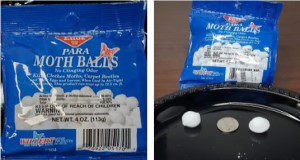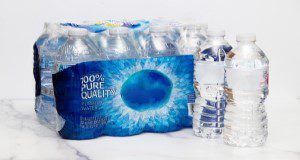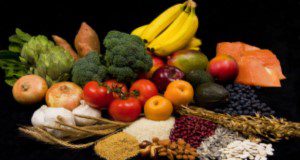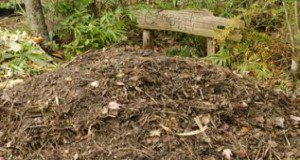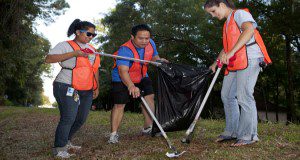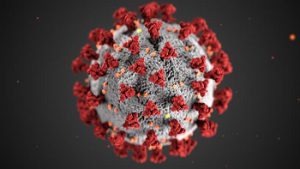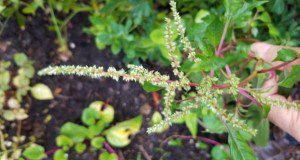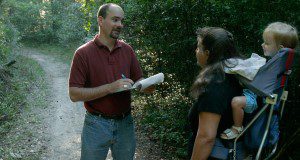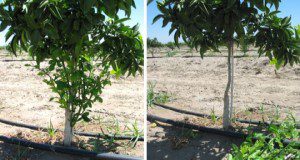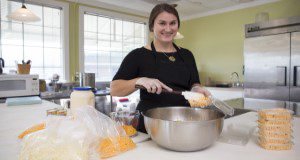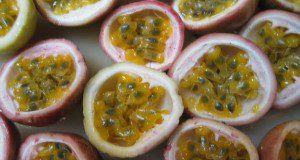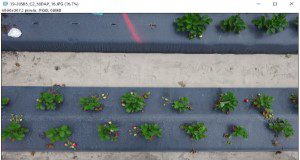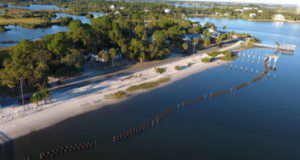Mothballs are widely available for purchase and familiar to many people. However, mothballs are one of the most misused products, and their misuse can cause harmful effects to people or the environment. This new 4-page publication of the UF/IFAS Pesticide Information Office will give the basics about what mothballs are, where they can be used, and their status as a pesticide. Written by Brett W. Bultemeier.
https://edis.ifas.ufl.edu/pi289
Author: Paul Roberts
Private Wells 101: Bacterial Contamination and Shock Chlorination
Private well users are responsible for the management and protection of their wells. This new 4-page EDIS publication is for Florida homeowners who are interested in learning more about their well-water system and understanding how to properly shock, or disinfect, the well if there is evidence of drinking water contamination. Written by Yilin Zhuang and Mary Lusk, and published by the UF/IFAS Department of Soil and Water Sciences.
https://edis.ifas.ufl.edu/ss700
Chronic Kidney Disease and Nutrition
Chronic kidney disease (CKD) is considered a public health issue within the United States because an estimated 37 million adults or 15% of the population have this disease. CKD is a disease characterized by the gradual loss of kidney function. Early prevention techniques such as a well-balanced diet reduce the progression of this disease. The purpose of this new 6-page article is to provide an overview of CKD and nutritional considerations. Written by Sofia Acevedo, Danielle Aycart, and Jeanette Andrade, and published by the UF/IFAS Food Science and Human Nutrition Department.
https://edis.ifas.ufl.edu/fs429
Recycling Organic Materials to Improve Your Florida-Friendly Edible Landscape
This new 7-page publication of the UF/IFAS Environmental Horticulture Department is intended to educate homeowners on environmentally friendly ways to enhance soil fertility for vegetables, herbs, and fruits in the home landscape. It discusses strategies for recycling nutrients in place or via composting systems to create productive edible landscapes with less waste. Adopting these methods into your landscape maintenance routine will build organic matter and add nutrients to the soil naturally. Written by Terra Freeman, Tiare Silvasy, Lynn Barber, Tom Wichman, Esen Momol, Tina McIntyre, Jacqlyn Rivas, and Jen Marvin.
https://edis.ifas.ufl.edu/ep599
Fundamentals of Volunteer Orientation
This new 4-page fact sheet is intended to assist volunteer managers when creating volunteer orientations for their new volunteers. Volunteer training and orientation is a critical component which should promote volunteers’ understanding of the role they hold within organizations. Leaders of volunteer organizations must ensure their organizations have adequately prepared volunteers to carry out the organization’s mission. Last, volunteer leaders should incorporate the cause, system, and social orientation components to effectively create an orientation focused on providing the appropriate onboarding of their most valuable asset: volunteers. Written by Olivia Caillouet, Jessica Williams, Shelby Atwood, and Matt Benge, and published by the UF/IFAS Department of Agricultural Education and Communication.
https://edis.ifas.ufl.edu/wc382
Manejo del COVID-19: mejores prácticas para agronegocios
This is the Spanish language translation of FSHN20-25/FS366, Handling COVID-19: Best Practices for Agribusiness. This material is adapted from the version published at https://foodsafety.ces.ncsu.edu/covid-19-resources/. Written by Tom Maddox and Laurel Dunn (University of Georgia) and published by the UF/IFAS Food Science and Human Nutrition Department.
https://edis.ifas.ufl.edu/fs395
Manejo del COVID-19: Granjas de frutas y verduras, y empacadoras
This is the Spanish language translation of FSHN20-25/FS366, Handling COVID-19: Produce Farms and Packinghouses. This material is adapted from the version published at https://foodsafety.ces.ncsu.edu/covid-19-resources/. Written by Laurel Dunn and published by the UF/IFAS Food Science and Human Nutrition Department.
https://edis.ifas.ufl.edu/fs394
Foundations of Effective Classroom Management
Classroom management can be challenging for teachers. While managing a classroom requires flexible approach, there are some basic strategies than can be used to make the classroom safe and engaging. This new 3-page article provides recommendations to teachers to manage student behavior in the agriculture classroom. Written by Kelsey M. Thornton, R. G. (Tre) Easterly III, and Ed Osborne, and published by the UF/IFAS Department of Agricultural Education and Communication.
https://edis.ifas.ufl.edu/wc381
Production Guide of Vegetable Amaranth for Florida
Vegetable amaranth is a beautiful and nutritious vegetable in the family Amaranthaceae. This vegetable has been cultivated in China for more than 400 years and has been introduced to several US states, such as Mississippi and Missouri. Florida’s mild climate combined with amaranth’s exceptional taste, nutrients, and colorful foliage suggest amaranth is a potential crop for commercial production for Florida. This new 7-page publication of the UF/IFAS Horticultural Sciences Department is intended to provide Florida growers with a production guide for vegetable amaranth to enhance its competitiveness and boost the economy by introducing this potential cash crop to growers. Written by Yuheng Qiu and Guodong Liu.
https://edis.ifas.ufl.edu/hs1407
Leches a base de plantas: Arroz
La leche de arroz es una bebida no láctea a base de plantas elaborada principalmente con arroz molido y agua. Se comercializa como un sustituto vegano de la leche de vaca, fácil de digerir y apto para personas alérgicas. Al igual que otras bebidas a base de plantas, la leche de arroz generalmente tiene un color blanco opaco o beige y una textura cremosa que se asemeja a la leche de vaca. Esta publicación describe cómo se elabora la leche de arroz, sus ingredientes y perfil de nutrientes, y los posibles beneficios para la salud y riesgos del consumo.
This new 5-page publication of the UF/IFAS Food Science and Human Nutrition Department is the Spanish translation of FSHN20-50/FS412, Plant-Based Milks: Rice, written by Meagan Lamothe, Daniela Rivero-Mendoza, and Wendy J. Dahl.
https://edis.ifas.ufl.edu/fs428
Seeding the Garden
Growing your own Florida vegetable garden can be a rewarding experience with a little planning. This 5-page publication of the UF/IFAS Horticultural Sciences Department presents an overview of proper seed selection and planting. It also provides best management practices, as well as relevant terms and methods, for seeding vegetables in home and community gardens. Written by Danielle Treadwell, David Outerbridge, Tabitha Petri, and James M. Stephens.
https://edis.ifas.ufl.edu/vh026
Bacterial Spot of Pepper
Bacterial spot, caused by three species of Xanthomonas, is a limiting disease problem on all peppers. This new 4-page fact sheet provides information on symptoms, causal organism and host resistance, disease cycle and epidemiology, and disease management (including cultural and sanitation practices, chemical control measures and the use of Actigard in chile peppers). Written by Camille McAvoy, Pamela Roberts, and Jeffrey Jones, and published by the UF/IFAS Plant Pathology Department.
https://edis.ifas.ufl.edu/pp362
The Savvy Survey #6e: Understanding How Question Type Impacts Future Analysis
This publication will briefly look at how the intent of a survey affects which types of questions should be asked and how the data can be analyzed to help address this intent. It is intended to provide guidance to Extension professionals, as well as persons in community organizations, who conduct surveys for program planning, improvement, and evaluation. Written by Colleen E. Gariton and Glenn D. Israel, and published by the UF/IFAS Department of Agricultural Education and Communication.
https://edis.ifas.ufl.edu/pd083
Leading Difficult Conversations Series #2: Preparing for the Conversation
This publication series is designed to equip leaders with strategies and tactics to use when they are tasked with having a difficult conversation. When approaching difficult conversations, leaders are encouraged to examine themselves prior to engaging in a hard conversation, because ultimately, a person can only change themself. In this series, the first topic to explore is preparing for the conversation. The components of proper preparation include clearly defining the issue and considering the motive behind the conversation. This new 3-page publication of the Department of Agricultural Education and Communication was written by Christy Chiarelli.
https://edis.ifas.ufl.edu/wc378
Management of Citrus Tree Canopies for Fresh-Fruit Production
Canopy management is a useful tool to induce precocity and maintain high production of optimum-sized, high-quality fruit. The aim of this new 8-page publication of the UF/IFAS Department of Soil and Water Sciences is to provide growers with practical tools with which to manage their trees for maximum fresh-fruit yield, quality, and profitability. Written by Andrew Krajewski, Arnold Schumann, Tim Ebert, Chris Oswalt, Rhuanito S. Ferrarezi, and Laura Waldo.
https://edis.ifas.ufl.edu/ss698
Cottage Food in Florida
In Florida, individuals can manufacture, sell, and store specific types of cottage food products in their primary home kitchen in accordance with Florida Statute 500.80. This new 3-page fact sheet, written by Sarah M. Ellis, Jennifer Hagen, and Matthew D. Krug and published by the UF/IFAS Food Science and Human Nutrition Department, provides basic information and resources for clientele who are interested in starting a food-based business out of their home kitchen. This document is one in a “Florida Food Entrepreneur” series, which seeks to assist new and established food entrepreneurs by providing information on topics relevant to food-based businesses.
https://edis.ifas.ufl.edu/fs425
The Passion Fruit in Florida
Passion fruit is a short-lived evergreen perennial vine that produces an aromatic and tropical-tasting fruit. This new 13-page publication of the UF/IFAS Horticultural Sciences Department provides a description of passion fruit and its various species and cultivars, as well as a guide to culture and management, harvest and storage, its pests and diseases, and food and marketing. Written by Mark Bailey, Ali Sarkhosh, Amir Rezazadeh, Joshua Anderson, Alan Chambers, and Jonathan Crane.
https://edis.ifas.ufl.edu/hs1406
Useful Image-Based Techniques for Manual and Automatic Counting Using ImageJ for Horticultural Research
Counts (e.g., number of leaves, fruits, seeds, or plants) are a common type of data gathered in horticultural research. In many instances, using ImageJ can increase the ease and accuracy of gathering count data. When image processing can easily separate objects of interest from the background, automatic counting with ImageJ can eliminate tedious manual counting processes. Furthermore, additional plant growth data, such as leaf area, plant width, and canopy area, can be collected from the same image. The image processing and analysis techniques introduced in this article are easily accessible and simple to use and thus can be adopted not only by researchers, but also by Extension agents and students. This new 10-page publication of the UF/IFAS Horticultural Sciences Department is part of a series introducing various image-based measurements with ImageJ for horticultural research. Written by Lillian Pride and Shinsuke Agehara.
https://edis.ifas.ufl.edu/hs1405
Living Shoreline Monitoring: How do I evaluate the environmental benefits of my living shoreline?
Living shorelines are structures made of natural materials such as oyster shell, sand, mangroves, salt marsh plants, and other organic materials built to protect properties from erosion. In addition to increasing shoreline stability, living shorelines enhance many valuable ecosystem functions. In this new 11-page publication of the UF/IFAS Department of Soil and Water Sciences, we provide homeowners, land managers, and Extension agents materials lists, protocols, and data sheets for measuring change in ecosystem function. Measuring and interpreting these measurements will help evaluate living shorelines projects as well as provide the foundation for monetarizing the value of these structures. Written by Laura K. Reynolds, Natalie C. Stephens, Savanna C. Barry, and Ashley R. Smyth.
https://edis.ifas.ufl.edu/ss694
The Road to Recovery #3: Facilitating Community Resilience for Effective Pandemic Response
This third publication in the Road to Recovery series provides information and recommendations to support Extension professionals’ ability to facilitate capacity building and resilience development for communities during COVID-19 and potential future pandemic situations. This new 5-page publication of the UF/IFAS Department of Agricultural Education and Communication was written by Cody Gusto, Colby Silvert, and John Diaz.
https://edis.ifas.ufl.edu/wc380
